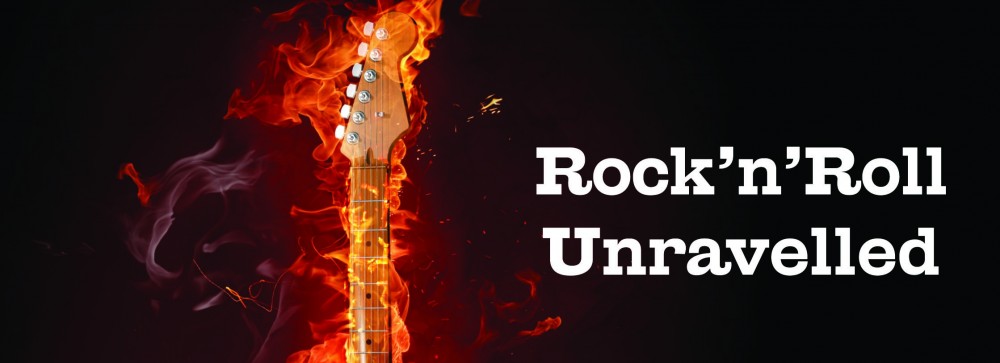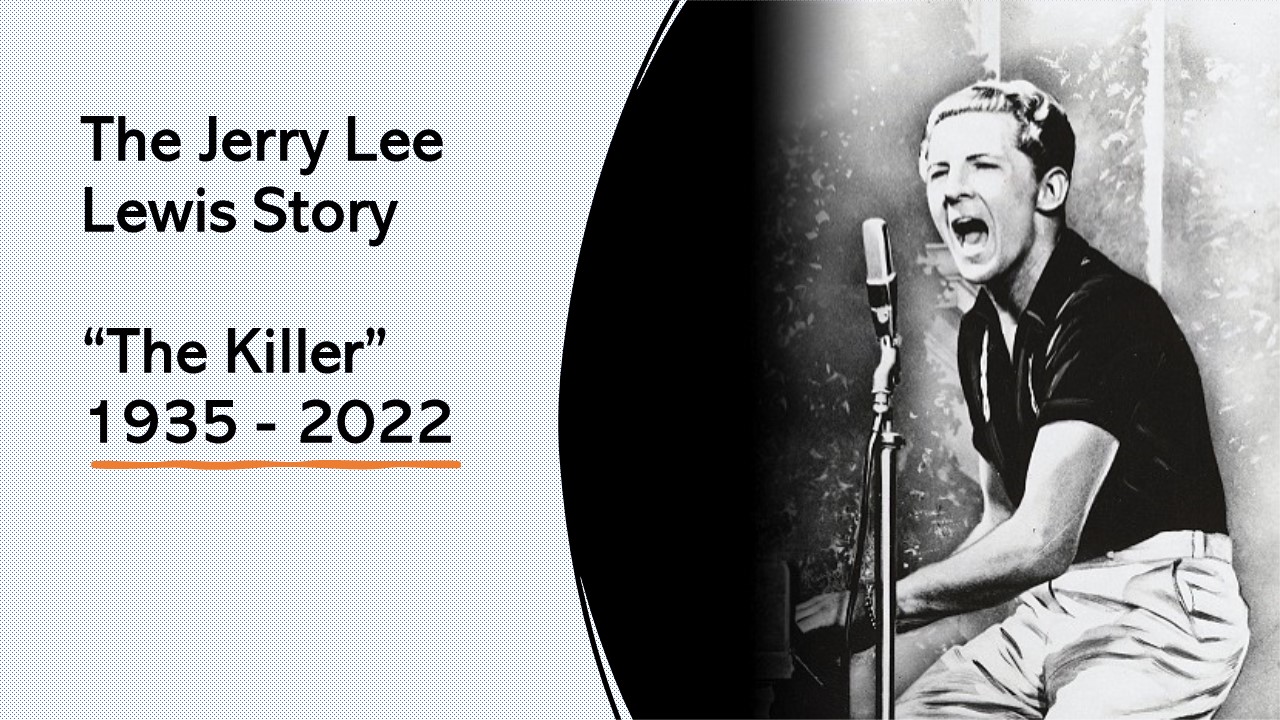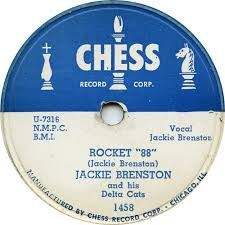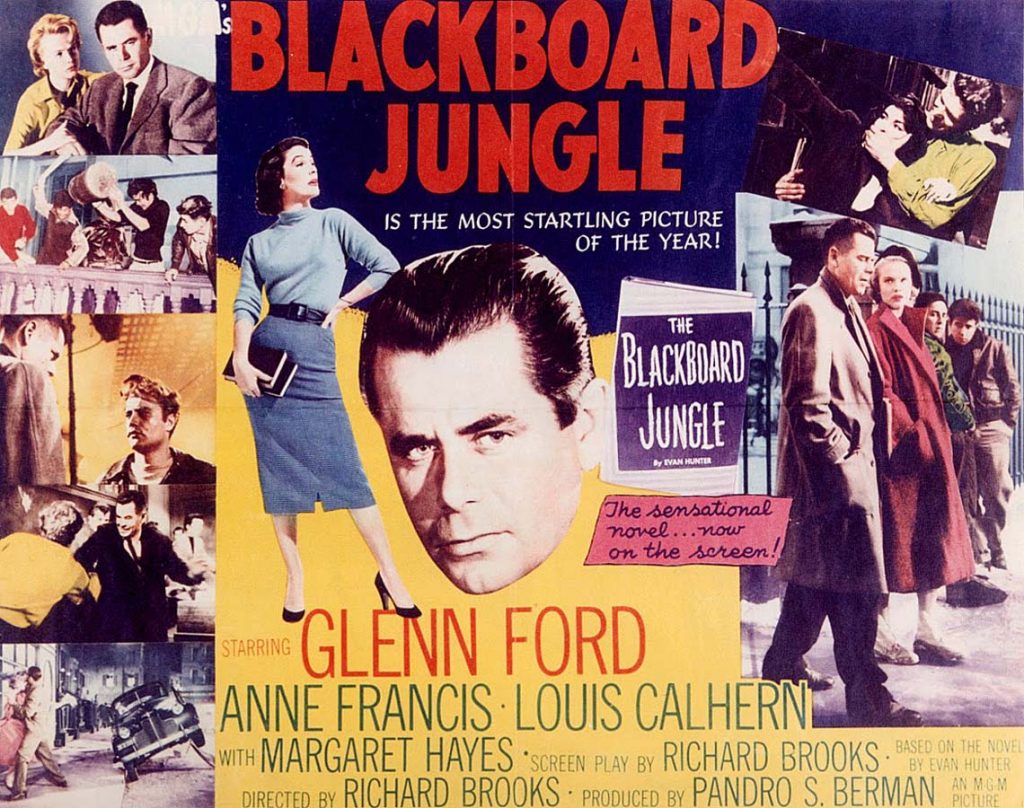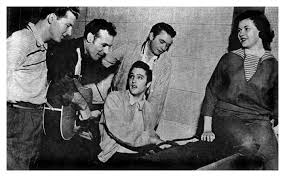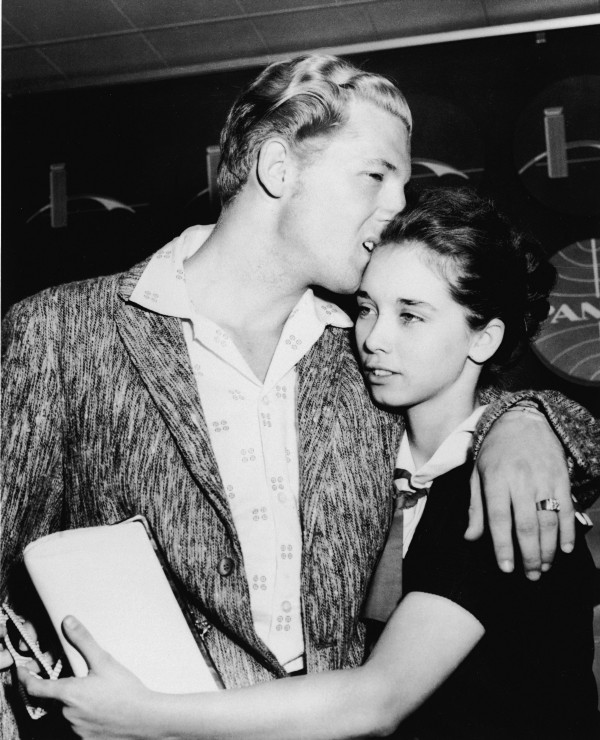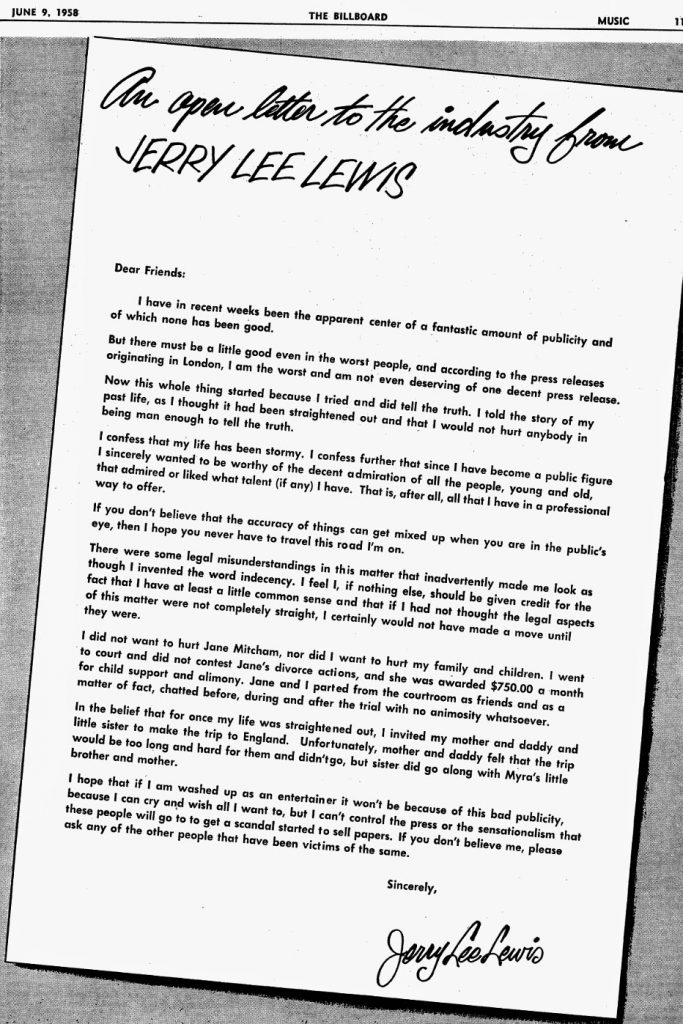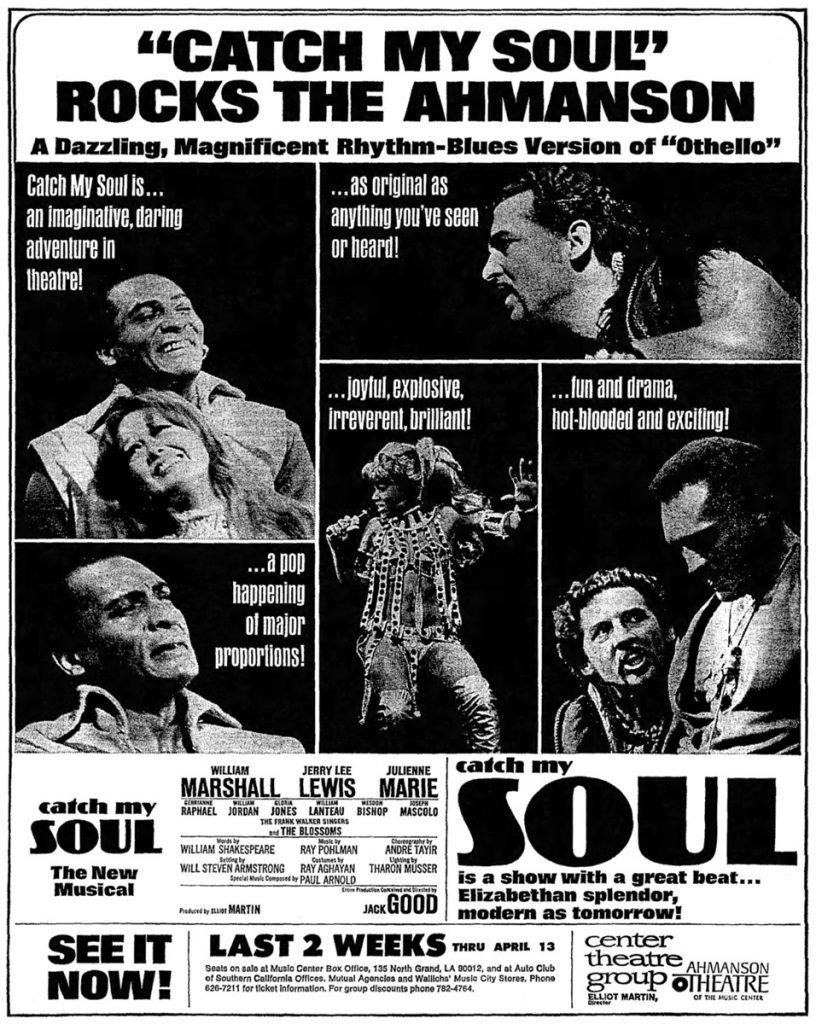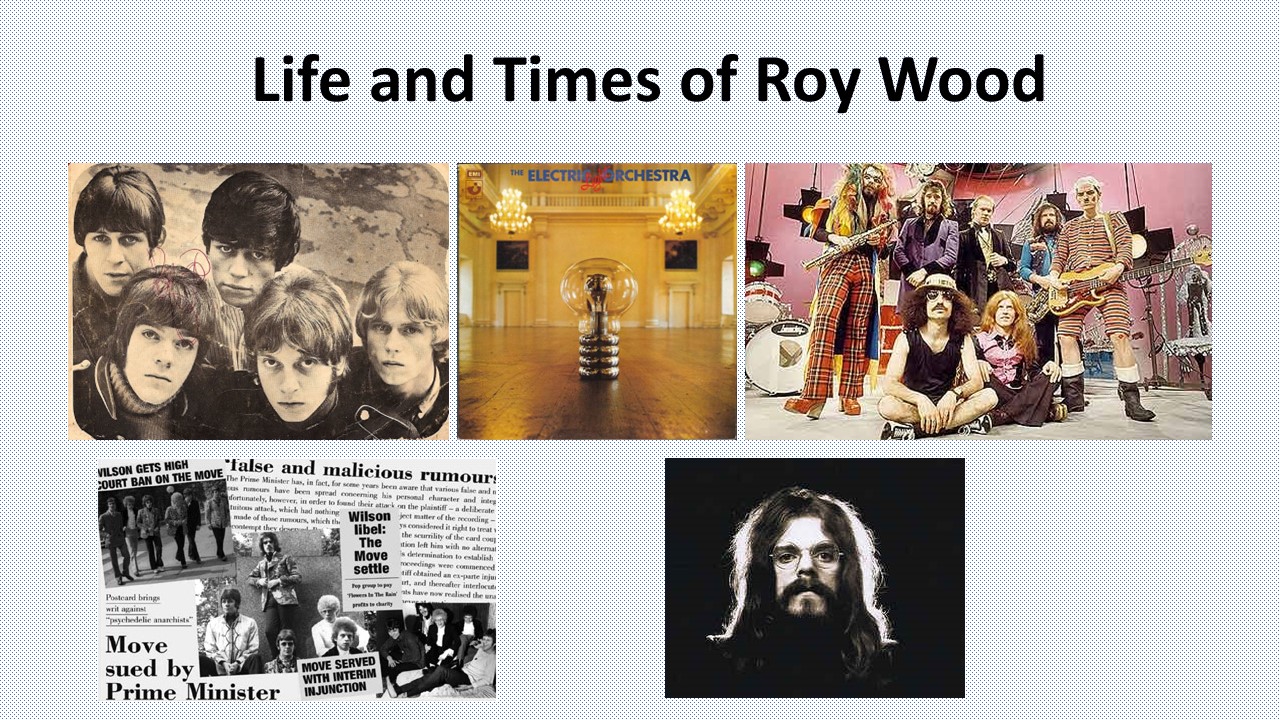The Jerry Lee Lewis Story
A true rock’n’roll pioneer. He fell from rock’n’roll favour in 1958 but reinvented himself as a country star – Jerry Lee Lewis Story.
To hear the Frank Carlyle Show live…
The Jerry Lee Lewis Story
Derek Shelmerdine author of Rock’n’Roll Unravelled
is a guest on The Frank Carlyle Show.
Live on Facebook – Monday 21 November 2022
The whole show: 8.00 to 10.00 pm (UK)
Derek Shelmerdine’s guest spot: 8.15 to 9.00 pm (UK)
PODCAST watch this space…
The Jerry Lee Lewis Story
The Jerry Lee Lewis Story
Jerry Lee Lewis, aka “The Killer”, was born in Ferriday, Louisiana on 29 September 1935.
A 14-year-old Jerry Lee Lewis made his first public appearance on 19 November 1949, at a Ford dealership in his hometown Ferriday, Louisiana. One of the songs he performed that day was Stick McGee’s Drinking Wine, Spo-Dee-O-Dee. When Stick McGee and His Buddies released the song in 1949, it gave Ahmet Ertegun’s fledgling Atlantic label its first big hit.
A year later, Jerry Lee enrolled at the Southwestern Bible Institute in Waxahachie, Texas. He failed to complete his studies. The Institute’s authorities took a dim view when Jerry Lee played My God is Real in a boogie woogie style. After that, Jerry Lee and the Southwestern Bible Institute went their separate ways. Although, religion ran in his family. One of Jerry Lee’s cousins was the well-known TV evangelist, Jimmy Swaggart.
Context
As the Jerry Lee Lewis story unfolds, we’ll take a look at what else was happening in the rock’n’roll world. This will provide context for how Jerry Lee’s career developed.
THE FIRST ROCK’N’ROLL RECORD RECORD
Ike Turner arranged a recording session at Sam Phillips’ Memphis Recording Service on 5 March 1951. Turner’s band cut four tracks that day.
Piano player Turner took the lead vocal on Heartbroken and Worried and I’m Lonesome Baby, released as a single, by Ike Turner and His Kings of Rhythm.
Sax player Jackie Brenston took lead vocal on Rocket 88 and Come Back Where You Belong. Although it was exactly the same band, this single was released as Jackie Brenston and His Delta Cats.
Rocket 88 is often cited as the first rock’n’roll record. Therefore. Jack Brenston went down in rock’n’roll history as the first rock’n’roll record. Whereas that accolade could so easily have been for Ike Turner.
LITTLE RICHARD
As the result of winning a talent competition, Little Richard won the opportunity to record for RCA in October 1951. At that session he cut four tracks. Taxi Blues and Every Hour were coupled for his debut single.
It was not yet Little Richard’s time. This single gave him little more than local success. He went on to release another three singles at RCA and a couple on the Peacock label. Following on from this period in obscurity, he took the rock’n’roll world by storm in 1955 with his first single on Speciality – Tutti Frutti.
ELVIS PRESLEY
Elvis Presley released his first Sun Records single, That’s All Right c/w Blue Moon of Kentucky on 9 July 1954.
He went on to release another four singles at Sun. He failed to trouble the Billboard Top-40 Hits with any of these. On the other hand, those five singles, ten songs, generated four hits on the Billboard Country Top-40. Including five weeks at #1 with I Forgot to Remember to Forget.
ROCK’N’ROLL EXPLODED ONTO AN UNSUSPECTING WORLD
On 25 March 1955 rock’n’roll exploded onto an unsuspecting world in the unusual form of a Hollywood movie about juvenile delinquency, Blackboard Jungle was set in an inner-city New York school dealing with the problems of juvenile delinquency.
The movie opened with a written preamble about the problems of “juvenile delinquency”. Moreover, the opening credits rolled to the strains of Bill Haley and His Comets song Rock Around the Clock. Reaction to the movie was immediate. It kick-started rock’n’roll around the globe and Bill Haley’s (We’re Gonna) Rock Around the Clock became one of the biggest selling singles of all time.
Rock’n’Roll had arrived!
In January 1956 Little Richard finally hit the Billboard Top-40 with Tutti-Frutti.
That same month Elvis Presley finally made the mainstream charts with his first RCA single, Heartbreak Hotel. This gave him a #1 for eight weeks on the Billboard Top-40. Furthermore, it also scored on the R&B Top-40 and spent a colossal 17 weeks at #1 on the Country Top-40.
Elvis had a meteoric rise to fame in 1956. As well as his first world-wide hit, Heartbreak Hotel, at the beginning of the year, he also made his first movie, Love Me Tender. To top the year off, he had ten singles on the Billboard Hot-100 published on 29 December. Despite that phenomenal achievement he failed to make #1 because Guy Mitchell’s Singing the Blues was spending its 4th week at the coveted #1 spot.
BACK TO SEE WHAT JERRY LEE WAS UP TO
In the summer of 1952 Jerry Lee Lewis recorded at Cosimo Matassa’s J&M Studios in New Orleans. He was accompanied by his friend Cecil Harrelson. At a cost of just over $2 they cut two tracks Don’t Stay Away (Till Love Grows Cold) and Jerry’s Boogie, also known as New Orleans Boogie, which is its official title.
At the end 1954 Jerry Lee Lewis was in Nashville looking for work. Roy Hall owned the Music Box club and as a result of Jerry Lee’s performance on the first night he was hired for a few weeks at $15 night.
Roy Hall is said to have co-written Whole Lotta Shakin’ Goin’ On. The song certainly gave Jerry Lee his big break in 1957 but his was a cover version. Big Maybelle released the original version in 1955 and Roy Hall also released his version of the song in the same year.
The Jerry Lee Lewis story now moves up a gear. He joined the Memphis based Sun Records in November 1956. As a result, he released his first Sun single on 1 December 1956. His debut, Crazy Arms, failed to trouble the Billboard Country Top-40. It was certainly a different story for Ray Price. Released in May 1956, his version spent 20 weeks at the top of the Billboards Country Top-40 Hits.
MILLION DOLLAR QUARTET
One of the most famous jam sessions of all time took place at the Sun Studios in Memphis on 4 December 1956. Known as “The Million Dollar Quartet”, it comprised Elvis Presley, Carl Perkins, Johnny Cash and Jerry Lee Lewis.
Carl Perkins was also on the Sun Records roster of artists. He was in the Sun studios to record his latest single, Matchbox. Jerry Lee Lewis had recently signed to Sun and was playing piano.
By now Elvis was with RCA but he’d just dropped by to see his old friends. Similarly with Johnny Cash, also signed to Sun, he happened to be passing and popped in.
Owner of Sun Records, Sam Phillips recorded the ensuing jam session. It stayed in the vaults for several decades before release.
Johnny Cash left the studio shortly after posing for the iconic photo of the four of them, with Presley seated at the piano. The lady seated on the piano in that photo is Elvis’s girlfriend, Marilyn Evans
Eight months after the Million Dollar Quartet jam, Jerry Lee Lewis found international fame with Whole Lot of Shakin’ Going On. It gave him a #3 on the Billboard Top-40 and a #8 in the UK.
At the end of 1957 Jerry Lee scored his second hit with Great Balls of Fire.
Nobody knew it at the time but Jerry Lee’s third American hit single would be his last major rock’n’roll hit record. Breathless entered the Billboard Top-40 on 10 March 1958 and peaked at #7. It also sored a #8 in the UK
On 28 March 1958 Alan Freed’s Big Beat package tour opened at New York’s Brooklyn Paramount Theatre.
There was considerable rivalry between Jerry Lee Lewis and Chuck Berry, as to which of them should close the show. Berry was certainly the more seasoned performer but Lewis had recently scored two massive hits with, Whole Lot of Shakin’ Going On and Great Balls of Fire.
Consequently, Freed decided that Chuck Berry should close the show. As a result, Lewis took a dim view of this. He took to the stage and delivered a storming performance. This included setting fire to his piano. Urban legend has it that when he left the stage, he turned to Berry and snarled words to the effect of – “Follow that!!”
The tour played across America and Canada, with artists including, Buddy Holly and the Crickets, Frankie Lymon and Larry Williams.
JERRY LEE LEWIS REACHED THE PEAK OF HIS CAREER
Probably the high-water mark for Jerry Lee Lewis’s career came on 17 May 1958, with its first “Jerry Lee Lewis Day”, to celebrate its celebrity citizen. The town held a parade in the afternoon with a concert in the High School that evening.
The beginning of the end for Jerry Lee’s rock’n’roll career came on 22 May 1958, when he arrived in London for his Ill-fated UK tour. He was certainly at the height of his success when he arrived in London for that first British tour. Support acts included, The Treniers and The Hedley Ward Trio.
During his arrival in England, Myra Gale was identified as Jerry Lee’s wife. It soon transpired that Myra Gale was 13 years old and the daughter of his bass-playing cousin, JW Brown. The marriage was legal when they tied the knot in Hernando, Mississippi but it was totally unacceptable for British fans. Consequently, he played three poorly received concerts, pulled out of his own headlining tour and returned to America.
As a result, the tour continued with British skiffle legend Chas McDevitt filling the gap.
The Jerry Lee Lewis story now takes a very different direction. After that UK tour, his American audiences also deserted him in their droves and sales of his fourth single, High School Confidential, plummeted. It reached just #21 on the Billboard Top-40. His rock’n’roll career never recovered, despite being a real contender for the title of the “King of Rock’n’Roll”
BEGINNING OF THE END OF THE GOLDEN AGE OF ROCK’N’ROLL
Jerry Lee Lewis effectively left the rock’n’roll stage in May 1958 but the beginning of the end for rock’n’roll came with Little Richard in October 1957. That’s when Little Richard was on tour in Australia, he found God and renounced rock’n’roll. Billed as The Big Show, Rock’n’Roll, the tour also included Gene Vincent, Eddie Cochran, and Johnny O’Keefe and the Dee Jays, Australia’s 1st rock’n’roll band.
Partway through the tour he played in Sydney and is reputed to have said to the audience, “If you want to live for the Lord, you can’t take rock’n’roll too. God doesn’t like it”. Sources vary as to the details, but the date of the announcement is most frequently given as 12 October.
Shortly after this, he threw his jewellery into the Hunter River – or maybe Sydney Harbour, once again sources vary. This epiphany was due to a sputnik passing overhead and signifying the end of the world, or a traumatic plane journey with engines on fire – yet again sources vary.
As a result, when Little Richard returned to America he recorded one final session for Speciality. Following this, he enrolled into Oakwood Theological College in Huntsville Alabama, in order to become a Seventh Day Adventist preacher.
Subsequently he only performed gospel songs, until his return to rock’n’roll in 1962.
Little Richard was not the only rock’n’roll star to leave rock’n’roll behind.
On 24 March 1958, Elvis Presley was inducted into the US Army. The Memphis Draft Board greeted 53310761, Elvis Presley.
He flew out of Germany on the 2 March 1960, after his two years of service life came to an end. His official discharge followed three days later.
JERRY LEE LEWIS NOW IN DAMAGE LIMITATION
Following his disastrous UK tour and falling record sales, Jerry Lee Lewis made several attempts to placate his fans and win back their support.
On the 30 May 1958 he recorded a light-hearted single, The Return of Jerry Lee. This took the form of a mock interview, where he supposedly stepped off a plane having just returned from London. The reporter’s questions are answered by snippets of Lewis’s songs. Radio stations failed to see the humour and it received minimal airplay.
Following the lack of success of the single, his next attempt to win back the fans was an apology in The Billboard magazine.
He took the whole of page 11 in the 9 June 1958 edition of Billboard magazine to publish his apology. The piece was titled, “An open letter to the industry from Jerry Lee Lewis”.
In it he acknowledged the strength of negative feelings against him but was dismayed that it all started out because he told the truth. The final paragraph included a prophetic comment where he hoped that if he was “washed up”, it was not because of this “bad publicity”.
Sadly, he was “washed up” as a rock’n’roll star.
End of his rock’n’roll era
Despite continued attempts by Sam Phillips to push his Sun recordings, Jerry Lee Lewis never managed to regain his former glory.
Break Up was released in August 1958 as the follow up to High School Confidential but it failed to trouble the Billboard Top-40. In fact, his next appearance on the Billboard Top-40 was nearly three years away. His cover of Ray Charles’ What’d I Say reached #30 in April 1961.
Jerry Lee returned to the UK in April 1962 when he opened his tour in the North of England, at Newcastle’s City Hall. Despite being well received by the British audiences, he never recaptured his old status as a real challenger to Elvis Presley for the title of “King of Rock’n’Roll”.
Lewis headlined the tour which also included, Johnny Kidd and the Pirates, Vince Eager, The Viscounts, Mark Eden and The Bachelors.
Jerry Lee Lewis’s contract with Sun Records expired on 6 September 1963.
A NEW ERA FOR JERRY LEE LEWIS
On 22 September 1963, Jerry Lee had his first recording session at Smash Records. This marked another landmark in his career. He reinvented himself as a country singer.
His first eight appearances in the Billboard Top-40 Country Hits chart were on the Sun record label. His last Sun hit was Cold, Cold Heart in August 1961. It would be another two years and more, with his move to Smash, before he graced the Billboard Top-40 Country chart again. That came in February 1964 with his first country hit on Smash, Pen and Paper.
In 1964 Jerry Lee recorded one of the all-time great live albums. On the 5 April he recorded his Live at the Star Club, Hamburg. The British group the Nashville Teens provided the backing. Later that year they found their own chart success with Tobacco Road. It gave them a #6 in the UK and a #14 in America. as a part of the “British Invasion” era.
Jerry Lee does Shakespeare
Rock’n’Roll wild-man, Jerry Lee Lewis went on to embrace the Bard. On 5 March 1968 he opened at the Ahmanson Theatre in downtown Los Angeles, in a production of Catch My Soul. This was an R&B adaptation of Shakespeare’s Othello. Lewis played the part of Othello’s treacherous friend Iago.
The Billboard review described Lewis’s performance as “first rate” and went on to say that his presence added “impact to the score”.
The musical was the brainchild of Jack Good, producer of TV shows Six-Five Special and Oh Boy! in the UK, and Shindig in America.
Darlene Love’s vocal group The Blossoms also appeared in the production.
In September 1969 Jerry Lee appeared at the Toronto Rock and Roll Revival festival. He was certainly in good company. The show included John Lennon’s Plastic Ono Band’s debut performance. In addition, fellow rock’n’roll legends, Little Richard, Chuck Berry, Bo Diddley and Gene Vincent were all there. One of rock’n’roll’s most notorious moments featured Alice Cooper – the chicken incident. Not forgetting the Doors, who headlined the show.
Jerry Lee Lewis – beyond the 1960s…
Another first for Jerry Lee, on 20 January 1973 he made his debut at the Grand Ole Opry. Surprisingly, this was sixteen years since his first appearance on the Billboard Top-40 Country chart. During that time he made 31 appearances on that Country chart
Nearly living up to his nickname “The Killer”, Jerry Lee accidentally shot his base player, Norman Owens. It was during Jerry Lee’s 41st birthday celebration. Owens survived the shooting and sued his boss.
On 23 November 1976 was once again waving a gun around. This time he was outside Elvis’s Memphis home, Graceland. He was demanding to see Elvis. Reputedly, he asked a security guard to tell Elvis, “the Killer’s here to see him!” Rather than inform Elvis, the guard called the police and they arrested Lewis.
An indication of Jerry Lee Lewis’s importance in the history of rock’n’roll, was his induction into the Rock and Roll Hall of Fame – in its inaugural year, 1986.
In 2006 Jerry Lee released the album, Last Man Standing. It was a series of duets with such rock’n’roll luminaries as Little Richard, Bruce Springsteen, Keith Richards and Eric Clapton.
His live performances continued and Jerry Lee Lewis played his final concert on 16 February 2019, at the Peace Center for the Performing Arts, Greenville, South Carolina.
Jerry Lee Lewis died on 28 October 2022.
